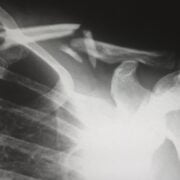
Revamp Your Lower Body Strength Routine with These Goblet Squat Variations
Goblet squats are a fantastic exercise for building lower body strength. They primarily target the muscles in the legs, including the quadriceps, hamstrings, and glutes. Additionally, goblet squats also engage the core muscles, providing stability and improving overall strength.
One of the key benefits of goblet squats is improved muscle activation. By holding a weight close to your chest, you create a counterbalance that allows you to maintain an upright posture throughout the movement. This helps to activate the muscles in your legs more effectively, leading to greater strength gains.
Another advantage of goblet squats is increased range of motion. The weight held in front of your body encourages you to squat deeper, which can help to improve flexibility and mobility in the hips and ankles. This increased range of motion not only enhances your squatting ability but also carries over to other exercises and daily activities.
Key Takeaways
- Goblet squats are a great exercise for building lower body strength.
- To perform a basic goblet squat, hold a weight close to your chest and squat down, keeping your back straight and knees in line with your toes.
- Goblet squats can be varied by adding pulses, overhead presses, lateral lunges, reverse lunges, calf raises, sumo squats, and Bulgarian split squats.
- These variations can target different muscles and add variety to your lower body strength routine.
- Incorporating goblet squat variations into your workout can help you build strength, improve balance, and prevent injury.
Basic Goblet Squat Technique: How to Perform the Exercise Correctly
To perform a basic goblet squat, start by holding a dumbbell or kettlebell with both hands at chest level. Stand with your feet shoulder-width apart and toes slightly turned out. Keep your chest up, shoulders back, and engage your core.
As you begin the movement, push your hips back and bend your knees to lower into a squat position. Aim to get your thighs parallel to the ground or as low as you can comfortably go while maintaining good form. Keep your weight in your heels and ensure that your knees are tracking over your toes.
Once you reach the bottom of the squat, push through your heels and drive your hips forward to return to the starting position. Remember to maintain good posture throughout the exercise by keeping your chest up and shoulders back.
Goblet Squat Variation 1: Goblet Squat with Pulse
The goblet squat with pulse is a variation that adds a small bounce at the bottom of the squat. To perform this exercise, follow the same technique as the basic goblet squat. However, when you reach the bottom of the squat, instead of immediately returning to the starting position, perform a small bounce or pulse.
The benefit of this variation is increased time under tension. By adding a pulse, you keep your muscles engaged for a longer period, which can lead to greater muscle activation and strength gains. This variation also helps to improve your ability to control and stabilize your body during the squat.
Goblet Squat Variation 2: Goblet Squat with Overhead Press
| Goblet Squat Variation 2: Goblet Squat with Overhead Press | Metric | Value |
|---|---|---|
| Muscles Worked | Quadriceps | High |
| Glutes | High | |
| Shoulders | High | |
| Equipment Needed | Dumbbell or Kettlebell | Yes |
| Barbell | No | |
| Difficulty Level | Intermediate | |
| Benefits | Strengthens lower body and shoulders, improves balance and stability, enhances overall athleticism | |
The goblet squat with overhead press combines the lower body strength benefits of the goblet squat with an upper body pressing movement. To perform this variation, start by holding a dumbbell or kettlebell at chest level. As you push through your heels to stand up from the squat, simultaneously press the weight overhead.
This variation not only targets the muscles in your legs but also engages your shoulders, triceps, and core. The overhead press adds an extra challenge to the exercise and helps to improve upper body strength. Additionally, combining these two movements increases calorie burn, making it a great option for those looking to maximize their workout efficiency.
Goblet Squat Variation 3: Goblet Squat with Lateral Lunge
The goblet squat with lateral lunge is a variation that adds a lateral movement to the exercise. To perform this variation, start by holding a dumbbell or kettlebell at chest level. As you stand up from the squat, take a step to the side and lower into a lunge position.
This variation targets different muscles than the basic goblet squat, including the glutes and inner thighs. It also helps to improve hip mobility and stability. The lateral movement challenges your balance and coordination, making it a great exercise for athletes or anyone looking to improve their overall lower body strength.
Goblet Squat Variation 4: Goblet Squat with Reverse Lunge

The goblet squat with reverse lunge is another variation that adds a different movement pattern to the exercise. To perform this variation, start by holding a dumbbell or kettlebell at chest level. As you stand up from the squat, take a step back into a lunge position.
This variation targets the hamstrings and glutes more intensely than the basic goblet squat. It also helps to improve balance and coordination. The reverse lunge adds an extra challenge to the exercise and can be a great option for those looking to increase the difficulty of their lower body strength routine.
Goblet Squat Variation 5: Goblet Squat with Calf Raise
The goblet squat with calf raise is a variation that adds an additional movement to the exercise. To perform this variation, start by holding a dumbbell or kettlebell at chest level. As you stand up from the squat, rise up onto your toes to perform a calf raise.
This variation targets the calves and helps to improve ankle mobility. It also adds an extra challenge to the exercise by requiring additional strength and stability in the lower legs. The goblet squat with calf raise is a great option for those looking to strengthen their lower legs and improve overall lower body strength.
Goblet Squat Variation 6: Goblet Squat with Sumo Squat
The goblet squat with sumo squat is a variation that changes the foot placement and stance of the exercise. To perform this variation, start by holding a dumbbell or kettlebell at chest level. Instead of standing with your feet shoulder-width apart, widen your stance and turn your toes out.
This variation primarily targets the inner thighs and helps to improve hip mobility. The wider stance and turned-out toes engage the muscles in the inner thighs more intensely. The goblet squat with sumo squat is a great option for those looking to target the inner thighs and improve overall lower body strength.
Goblet Squat Variation 7: Goblet Squat with Bulgarian Split Squat
The goblet squat with Bulgarian split squat is a variation that adds a single-leg movement to the exercise. To perform this variation, start by holding a dumbbell or kettlebell at chest level. As you stand up from the squat, step one foot back onto a bench or step, lowering into a lunge position.
This variation targets the glutes and quads more intensely than the basic goblet squat. It also helps to improve single-leg strength and stability. The goblet squat with Bulgarian split squat is a great option for those looking to challenge their balance and coordination while improving overall lower body strength.
Incorporating Goblet Squat Variations into Your Lower Body Strength Routine
Goblet squats and their variations are excellent exercises for building lower body strength and improving overall mobility. By incorporating these exercises into your lower body strength routine, you can target different muscle groups, challenge your balance and coordination, and increase the difficulty of your workouts.
Whether you choose to perform the basic goblet squat or experiment with different variations, it’s important to focus on maintaining good form and engaging your core throughout the movement. Start with lighter weights and gradually increase the load as you become more comfortable with the exercise.
Remember, consistency is key when it comes to seeing results. Aim to incorporate goblet squats and their variations into your workouts at least two to three times per week. With time and dedication, you’ll notice improvements in your lower body strength, mobility, and overall fitness level. So grab a dumbbell or kettlebell and get squatting!
FAQs
What are goblet squats?
Goblet squats are a type of squat exercise that involves holding a weight close to your chest while performing a squatting motion.
What muscles do goblet squats work?
Goblet squats primarily work the lower body muscles, including the quadriceps, hamstrings, glutes, and calves. They also engage the core muscles.
What are the benefits of goblet squats?
Goblet squats can improve lower body strength, increase muscle mass, improve mobility and flexibility, and enhance overall athletic performance.
What are some variations of goblet squats?
Some variations of goblet squats include the single-leg goblet squat, the goblet squat with a pulse, the goblet squat with a pause, and the goblet squat with a jump.
What equipment do I need to perform goblet squats?
To perform goblet squats, you will need a weight, such as a dumbbell or kettlebell, and enough space to perform the exercise.
Are goblet squats suitable for beginners?
Yes, goblet squats can be a great exercise for beginners as they are relatively easy to perform and can help build a strong foundation for more advanced exercises.
How many reps and sets should I do for goblet squats?
The number of reps and sets you should do for goblet squats will depend on your fitness level and goals. Generally, it is recommended to perform 3-4 sets of 8-12 reps.

















